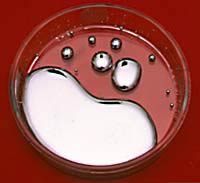| << Chapter < Page | Chapter >> Page > |
| Element | Terrestrial abundance (ppm) |
| Zn | 75 (Earth’s crust), 64 (soil), 30 x 10 -6 (sea water) |
| Cd | 0.1 (Earth’s crust), 1 (soil), 1 x 10 -6 (sea water) |
| Hg | 50 x 10 -6 (Earth’s crust), 2 x 10 -8 (soil), 40 x 10 -12 (sea water) |
The naturally abundant isotopes of the Group 12 metals are listed in [link] .
| Isotope | Natural abundance (%) |
| Zinc-64 | 48.6 |
| Zinc-66 | 27.9 |
| Zinc-67 | 4.1 |
| Zinc-68 | 18.8 |
| Zinc-70 | 0.6 |
| Cadmium-106 * | 1.25 |
| Cadmium-108 * | 0.89 |
| Cadmium-110 | 12.49 |
| Cadmium-111 | 12.8 |
| Cadmium-112 | 24.13 |
| Cadmium-113 * | 12.22 |
| Cadmium-114 * | 28.73 |
| Cadmium-116 * | 7.49 |
| Mercury-196 | 0.15 |
| Mercury-198 | 9.97 |
| Mercury-199 | 16.87 |
| Mercury-200 | 23.1 |
| Mercury-201 | 13.18 |
| Mercury-202 | 29.86 |
| Mercury-204 | 6.87 |
Many radioisotopes of zinc have been characterized. Zinc-65 that has a half-life of 244 days, is the most long-lived isotope, followed by 72 Zn with a half-life of 46.5 hours. The most common decay mode of an isotope of zinc with a mass number lower than 64 is electron capture, producing an isotope of copper, [link] .
The most common decay mode of an isotope of zinc with mass number higher than 64 is beta decay (β–), which produces an isotope of gallium, [link] .
Naturally occurring cadmium is composed of 8 isotopes. For two of them, natural radioactivity was observed, and three others are predicted to be radioactive but their decay is not observed, due to extremely long half-life times. The two natural radioactive isotopes are 113 Cd (half-life = 7.7 x 10 15 years) and 116 Cd (half-life = 2.9 x 10 19 years).
There are seven stable isotopes of mercury with the longest-lived radioisotopes being 194 Hg (half-life = 444 years) and 203 Hg (half-life = 47 days). 199 Hg and 201 Hg are the most often studied NMR-active nuclei, having spins of 1 / 2 and 3 / 2 respectively.
A summary of the physical properties of the Group 12 metals is given in [link] . Because of the n s electron in the Group 12 metals are tightly bound, and hence relatively unavailable for metallic bonding, the metals are volatile with low boiling points, as compared to the Group 2 metals.
| Element | Mp (°C) | Bp (°C) | Density (g/cm 3 ) |
| Zn | 419.53 | 907 | 7.14 |
| Cd | 321.07 | 767 | 8.65 |
| Hg | -38.83 | 356.73 | 13.534 (liquid) |
The most notable anomaly in the Group 12 metals is the low melting point of mercury compared to zinc and cadmium. In order to completely understand the reasons for mercury’s low melting point quantum physics is required; however, the key point is that mercury has a unique electronic configuration, i.e., [Xe] 5 d 6 s . The stability of the 6 s shell is due to the presence of a filled 4 f shell, because an f shell poorly screens the nuclear charge that increases the attractive coulomb interaction of the 6 s shell and the nucleus. Such a configuration strongly resists removal of an electron and as such mercury behaves similarly to noble gas elements, which form weakly bonded and thus easily melting solids ( [link] ).

The vast majority (95%) of zinc is mined from of the zinc sulfide ores. The zinc is most often mixed with copper, lead, and iron. Zinc metal is produced by extraction, in which the ore is ground and then the minerals are separated from the gangue (commercially worthless mineral matter) by froth flotation (a process for selectively separating hydrophobic materials from hydrophilic). Roasting converts the zinc sulfide concentrate produced to zinc oxide, [link] . Reduction of the zinc oxide with carbon, [link] , or carbon monoxide, [link] , at 950 °C into the metal is followed by distillation of the metal. Since cadmium is a common impurity in zinc ores, it is most often isolated during the production of zinc. Cadmium is isolated from the zinc metal by vacuum distillation if the zinc is smelted, or cadmium sulfate is precipitated out of the electrolysis solution.
Mercury is extracted by heating cinnabar (HgS) in a current of air, [link] , and condensing the vapor.

Notification Switch
Would you like to follow the 'Chemistry of the main group elements' conversation and receive update notifications?